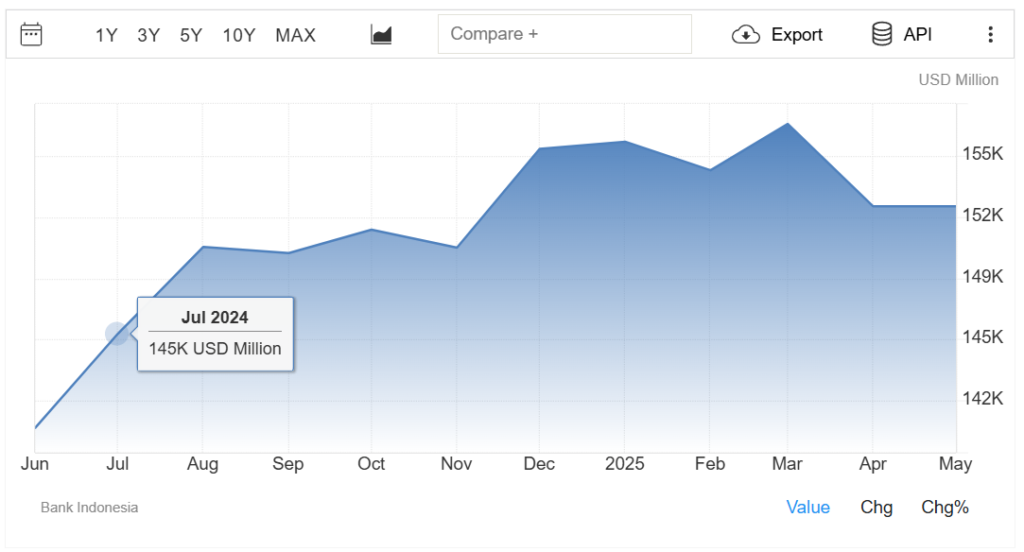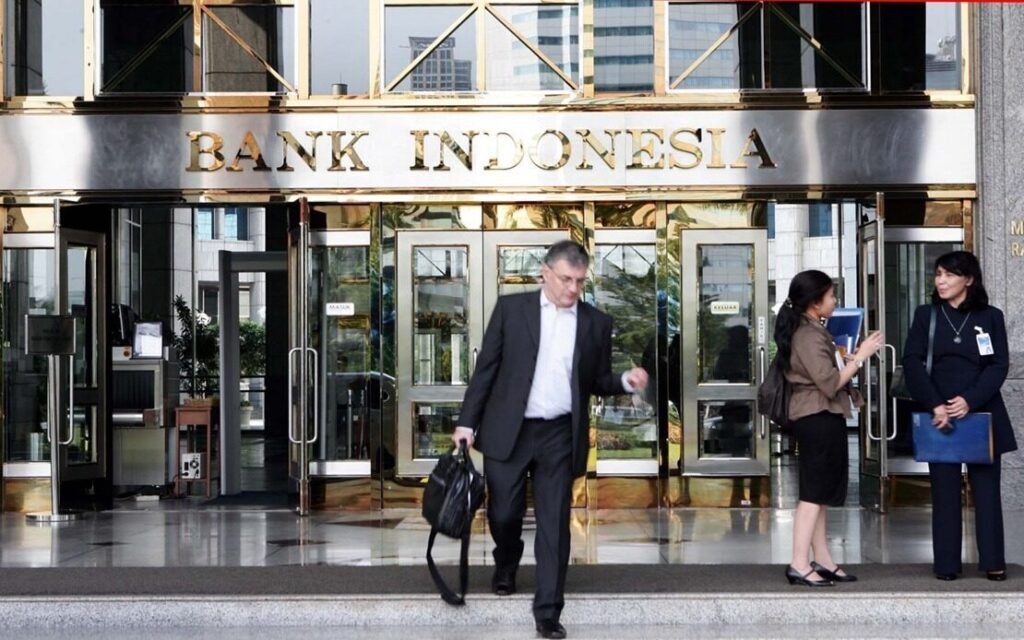BI Forex Intervention in 2025: How Bank Indonesia Is Redefining Market Stability
BI forex intervention: Currency markets in 2025 are far from calm. As the global financial landscape adjusts to persistent inflation, shifting U.S. Federal Reserve policy, and fragile geopolitical conditions, volatility has returned across multiple regions. Emerging markets like Indonesia, which are deeply linked to external trade and capital flows, face renewed exposure to exchange rate swings.
Amid this backdrop, BI forex intervention has become a stabilizing force in Indonesia’s economic policy playbook. But this year, the way Bank Indonesia intervenes is different—more strategic, less visible, and increasingly rooted in preemptive action rather than reactive firefighting.
From Reaction to Strategy: BI forex intervention- How Intervention Has Changed

Source: Utusan Malaysia
Historically, foreign exchange intervention was seen as an emergency tool—used when the rupiah was under visible attack. But in 2025, BI’s posture has shifted toward something more agile and anticipatory. Instead of waiting for sharp devaluations, the central bank now monitors pressure points and acts earlier, using market-based tools that send signals without spooking participants.
This subtle recalibration has made interventions feel less like rescue missions and more like corrections—providing smoother conditions for trade, investment, and monetary policy transmission.
Rupiah Movements in 2025: Controlled, Not Fixed

Source: TradingEconomics
Since January 2025, the rupiah has remained under mild but consistent pressure, largely due to global trends: stronger U.S. treasury yields, narrowing commodity spreads, and risk-off investor sentiment. Yet, unlike previous periods where capital outflows led to abrupt depreciation, this year’s adjustments have been more measured.
This points to BI’s effective use of a managed float system—allowing the rupiah to move in line with fundamentals, while curbing excessive short-term volatility. BI forex intervention in 2025 has been focused less on achieving a target rate and more on ensuring orderly market behavior.
Key Intervention Tools This Year: BI forex intervention- Spotlight on DNDFs
One of the most prominent features of 2025’s intervention strategy is the rise of Domestic Non-Deliverable Forwards (DNDFs). These instruments give market participants the ability to hedge their rupiah exposure for future dates, while allowing BI to manage expectations without drawing heavily from reserves.
This year, DNDF auction volumes have grown, and their frequency has increased—signaling BI’s confidence in this tool. Compared to blunt spot market interventions, DNDFs offer a way to ease speculative tension more subtly.
Reserve Utilization: Still Conservative, Still Credible

Source: The Straitstimes
Despite the turbulent global backdrop, Indonesia’s forex reserves have remained relatively stable throughout 2025. Bank Indonesia has been careful not to lean too heavily on direct dollar sales, which can rapidly deplete buffers. Instead, it has relied on tactical interventions—offering liquidity in precise amounts and at moments when the market shows signs of stress.
This conservative reserve policy sends an important message to international markets: Indonesia is not panicking, and its central bank retains both capacity and confidence.
Coordinated Messaging Has Reduced Uncertainty
Another notable shift in 2025 is how BI communicates its intentions. While the bank doesn’t announce intervention in real time, it now embeds currency policy within broader economic updates. For example, during its Q1 and Q2 monetary reviews, BI emphasized its readiness to maintain exchange rate stability and ensure liquidity without directly naming specific interventions.
This balanced communication strategy has helped avoid triggering market overreactions. By aligning its messaging with data and policy direction, BI builds trust in its decisions—even when they happen quietly.
Implications for Businesses and Investors in 2025

Source: Bernama
For businesses, a more stable rupiah means greater certainty in planning imports, pricing strategies, and cost forecasts. For investors, especially those holding Indonesian bonds or equities, confidence in Bank Indonesia’s ability to manage shocks is a key reason to stay engaged with the local market.
As 2025 progresses, BI’s measured response to volatility may be one of the reasons Indonesia avoids the sharper currency pressures faced by some of its regional peers.
Conclusion: BI Forex Intervention in 2025 Is Defined by Precision and Patience
This year, BI forex intervention in 2025 is less about force and more about finesse. Bank Indonesia is shaping a new narrative—one in which intervention is not a last resort, but a policy instrument guided by data, timing, and transparency.
With global risks likely to persist into 2026, BI’s strategy will remain key to anchoring inflation, investor confidence, and financial stability. The rupiah doesn’t need to be fixed—it needs to be managed. And in 2025, Bank Indonesia appears to be doing exactly that.




